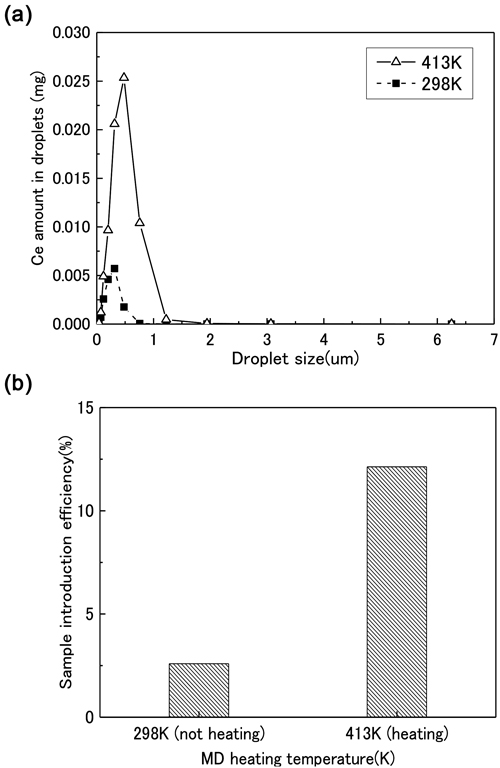
- |<
- <
- 1
- >
- >|
-
樋口 謙一, 横山 浩一, 佐藤 洋之, 千葉 道夫, 野村 誠治2017 年103 巻7 号 p. 407-413
発行日: 2017年
公開日: 2017/06/30
ジャーナル オープンアクセス HTMLWe commercialized Reactive Coke Agglomerate (RCA), a cement-bonded pellet to decrease the thermal reserve zone temperature for the reduction of the reducing agent rate of blast furnaces. To achieve a high productivity of supplying RCA to large blast furnaces, a rapid curing process of RCA using steam was investigated. We obtained rapid curing of RCA within 18 h by combining primary curing for 12 h and stream curing at 80°C for 5 h subsequently with drying for 1 h. This combination provided sufficient strength to an RCA product when compared with the strength obtained after conventional yard curing, which requires a long curing time of 14 days. Plant trials revealed that a longer primary curing time was required because of the non-homogeneity of thermal conditions. Nevertheless, the curing period could be shortened by 12.5 days with drying and 9 days without drying. Mineralogy and morphology of hardened cement in RCA after rapid curing were investigated. XRD and thermal analysis revealed that the basic mineral composition of cement after rapid curing was comparable with that after conventional yard curing. In plant tests, during rapid curing, hydration and microstructural evolution of cement in RCA were accelerated by steam curing. RCA involving the steam curing process has been implemented in Oita works and it has been helping in a stable operation of two large blast furnaces under a low RAR.
 抄録全体を表示PDF形式でダウンロード (1575K) HTML形式で全画面表示
抄録全体を表示PDF形式でダウンロード (1575K) HTML形式で全画面表示
-
板橋 大輔, 水上 和実, 相本 道宏, 西藤 将之2017 年103 巻7 号 p. 414-421
発行日: 2017年
公開日: 2017/06/30
[早期公開] 公開日: 2017/06/08ジャーナル オープンアクセス HTMLMistral Desolvation (MD), a sample introduction method for Inductively Coupled Plasma (ICP)-Atomic Emission Spectroscopy (AES) and Mass Spectrometry (MS), provides sensitivity enhancement over 5 times compared to conventional sample introduction method (concentric nebulizer and Spray chamber). Some groups have been proposed different mechanisms of sensitivity enhancement by MD,e.g. inhibition of poly-atomic ion generation derived from solvent, influence of the change of plasma condition, and improvement of sample transportation efficiency in plasma. However, uniform understanding has not been obtained.
In this paper, we have identified the dominant factor of a sensitivity enhancement by MD and examined application to chemical analysis of steel samples. It is found that the MD method provides decrease of 100-250 K plasma temperature, which leads to sensitivity loss. On the other hand, sample transportation efficiency improves by a factor of 4.7 times by virtue of an increase in the sum of small droplets less than 1.0 μm, which is comparable to fivefold sensitivity enhancement. Thus, we concluded that the dominant factor of sensitivity enhancement achieved by the MD method is improvement of sample transportation efficiency with decreasing droplet size.
Besides, the standard steel samples have analyzed by MD-ICP-AES. It is found that almost tenth amount of sample consumption and almost 3-fold sensitivity can be achieved, the analyzed value corresponds exactly to certificated value. Therefore, this method can be expected to apply to chemical analysis of micro-alloy in steels.
 Effect of heating temperature of MD process for droplet size distribution and introduction efficiency. (a) Droplet size distribution upon heating temperature of MD process (b) Results of sample introduction efficiency. ■, 298 K; △, 413 K Fullsize Image抄録全体を表示PDF形式でダウンロード (881K) HTML形式で全画面表示
Effect of heating temperature of MD process for droplet size distribution and introduction efficiency. (a) Droplet size distribution upon heating temperature of MD process (b) Results of sample introduction efficiency. ■, 298 K; △, 413 K Fullsize Image抄録全体を表示PDF形式でダウンロード (881K) HTML形式で全画面表示
-
青木 祥宏, 黒岩 良祐, 藤井 英俊, 村山 元, 泰山 正則2017 年103 巻7 号 p. 422-428
発行日: 2017年
公開日: 2017/06/30
ジャーナル オープンアクセス HTMLLinear Friction Welding (LFW) is a solid-state joining process, in which a joint is obtained through the relative motion of two components under a high contact load. The most important factor of this conventional method is to obtain a fresh surface at the interface by expelling the weld interface as flash. In this study, medium carbon steel was welded by LFW at a low frequency, low amplitude and high applied pressure. As a result of the temperature measurements and microstructure observations, the maximum temperature of the weld plane was confirmed to be below the A1 transformation temperature, and martensitic transformation was prohibited at the weld interface. The key concept of this method are applying a large strain deformation to the interfaces to recrystallize at a lower temperature which is different from the conventional LFW.
抄録全体を表示PDF形式でダウンロード (3685K) HTML形式で全画面表示
-
小林 覚2017 年103 巻7 号 p. 429-433
発行日: 2017年
公開日: 2017/06/30
ジャーナル オープンアクセス HTMLEffects of Si solid solution in Fe substrate on the formation of Fe-Zn intermetallic layers between the Fe(-Si) substrate and liquid Zn were investigated using a combinatorial technique. The formation of ζ-FeZn13 layer was promoted by Si solid solution upto 2 at.% in the Fe substrate but retarded by further Si solid solution. The formation of δ1-FeZn7-10 phase and Γ-Fe3Zn10 phase was retarded by Si solid solution upto 10 at.%. The investigations on the rate of Fe dissolution from the Fe substrate to the Zn liquid, the Fe and Si contents in the δ1 phase suggest that the retardation of the Fe-Zn intermetallic layer formation by Si solid solution in the Fe substrate is caused by the difficulty in the nucleation of δ1 phase in the lower Si contents less than 3 at.% and by the decrease in the rate of Fe dissolution to the Zn liquid in the higher Si contents.
抄録全体を表示PDF形式でダウンロード (1493K) HTML形式で全画面表示
-
伊藤 孝矩, 山﨑 重人, 光原 昌寿, 中島 英治, 西田 稔, 米村 光治2017 年103 巻7 号 p. 434-442
発行日: 2017年
公開日: 2017/06/30
[早期公開] 公開日: 2017/03/06ジャーナル オープンアクセス HTMLCreep properties and microstructures for a polycrystalline Ni-based heat-resistant alloy whose grain boundaries were covered by dense intergranular intermetallics were investigated. Creep tests were carries out at 850°C and 80-130 MPa. The creep strength of this alloy was higher than the Alloy617 and HR6W, and equal to the Alloy740, which are pre-existing candidate materials for steam pipes of A-USC power plant. The retardation of acceleration of creep rate was observed characteristically in the creep curves. This retardation behavior was deeply related to the superior creep strength of this alloy. The spherical Ni3Al (γ’) particles were distributed uniformly in the grain interior, whose coarsening behavior was monotonically dependent on the creep time. The intermetallics of Laves phase and σ pahse were formed densely at grain boundary. High coverage ratio of the intergranular intermetallics was maintained until the later stage of acceleration creep region. Therefore, it suggested that the retardation of creep acceleration was not caused by the precipitates behavior of intragranular γ’ particles and intergranular intermetallics, though both the precipitates were understandably effective against the creep strengthening. The plate-like Laves phase was formed in the grain interior during creep. The evolution of volume fraction of intragranular Laves phase depended on not creep time but creep strain. From the results of SEM/EBSD analyses and TEM observations, it revealed that the intragranular Laves phase enhanced the work-hardenability due to the constraint on plasticity and originated the retardation of creep acceleration.
抄録全体を表示PDF形式でダウンロード (3906K) HTML形式で全画面表示
- |<
- <
- 1
- >
- >|